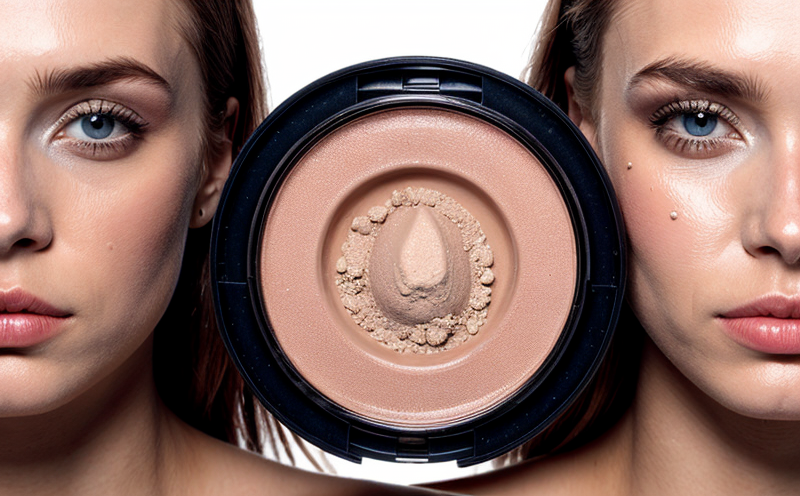Barium Content Testing in Cosmetic Raw Materials
The demand for safe and high-quality cosmetic products has increased significantly in recent years. Ensuring that cosmetic raw materials are free from harmful contaminants, including heavy metals like barium, is a critical aspect of product safety and compliance with international standards. This service focuses on the accurate determination of barium content in cosmetic raw materials using precise analytical techniques.
Barium, while not inherently toxic at low levels, can pose risks if present in high concentrations or as soluble compounds. The presence of barium in cosmetic products may indicate contamination from poor manufacturing practices, environmental factors, or the use of substandard raw materials. Testing for barium content is thus a vital step in ensuring product safety and maintaining brand integrity.
The analytical methods used to determine barium content include atomic absorption spectroscopy (AAS), inductively coupled plasma-optical emission spectrometry (ICP-OES), and inductively coupled plasma-mass spectrometry (ICP-MS). These techniques offer high sensitivity, precision, and accuracy, enabling the detection of even trace levels of barium. The choice of method depends on the concentration range expected and the required level of precision.
Sample preparation is a critical step in barium content testing. Depending on the raw material type, this may involve grinding, drying, or digestion with acid to ensure that all barium compounds are available for analysis. The sample must be representative of the entire batch being tested, which requires careful sampling and handling procedures.
Once prepared, the sample is analyzed using one of the aforementioned techniques. AAS provides a simple and cost-effective method for detecting barium, while ICP-OES offers better sensitivity and broader detection capabilities. For more precise measurements or lower limits of detection, ICP-MS is recommended. The results are then compared to established thresholds set by regulatory bodies such as the FDA and the European Union's Cosmetic Regulation.
The service also includes a comprehensive report that details the test methodology, sample preparation procedures, analytical results, and compliance with relevant standards. This report serves as an essential tool for quality managers, compliance officers, and R&D engineers to make informed decisions about raw material sourcing and product safety.
| Application | Description |
|---|---|
| Raw Material Screening | Detects potential contamination in incoming batches of cosmetic ingredients. |
| New Product Development | Ensures that new formulations comply with safety regulations and standards. |
| Quality Assurance | Monitors ongoing production to ensure consistent product quality. |
| Supplier Auditing | Evaluates the reliability and compliance of suppliers' raw materials. |
The service is designed to meet the needs of various stakeholders within the cosmetics industry, including manufacturers, distributors, and regulatory bodies. By providing accurate and reliable barium content testing, we support the development of safer and more sustainable cosmetic products.
Environmental and Sustainability Contributions
- Reduction in the use of hazardous chemicals through contamination control.
- Promotion of ethical sourcing practices by ensuring suppliers meet safety standards.
- Support for regulatory compliance, thereby reducing the risk of product recalls and legal penalties.
- Enhanced brand reputation among consumers who prioritize health and environmental sustainability.
The accurate determination of barium content in cosmetic raw materials not only ensures consumer safety but also contributes to a more sustainable cosmetics industry. By minimizing contamination risks, we help manufacturers make informed decisions that align with global sustainability goals.
Use Cases and Application Examples
The testing of barium content is particularly relevant in various types of cosmetic raw materials, including powders, liquids, and semi-solids. Below are some specific use cases:
- Foundation Powders: Ensuring that the mineral ingredients used in foundation powders are free from harmful levels of barium.
- Lipsticks and Lip Balms: Detecting potential contamination in coloring agents used for lip products.
- Cleansers and Moisturizers: Monitoring the safety of surfactants and emulsifiers, which may contain trace amounts of barium compounds.
- Hair Care Products: Screening raw materials like shampoos or conditioners that may be derived from contaminated sources.
In addition to these examples, the service is applicable across a wide range of cosmetic products and ingredients. The testing process can identify not only barium but also other heavy metals and contaminants, providing a comprehensive approach to ensuring product safety.





